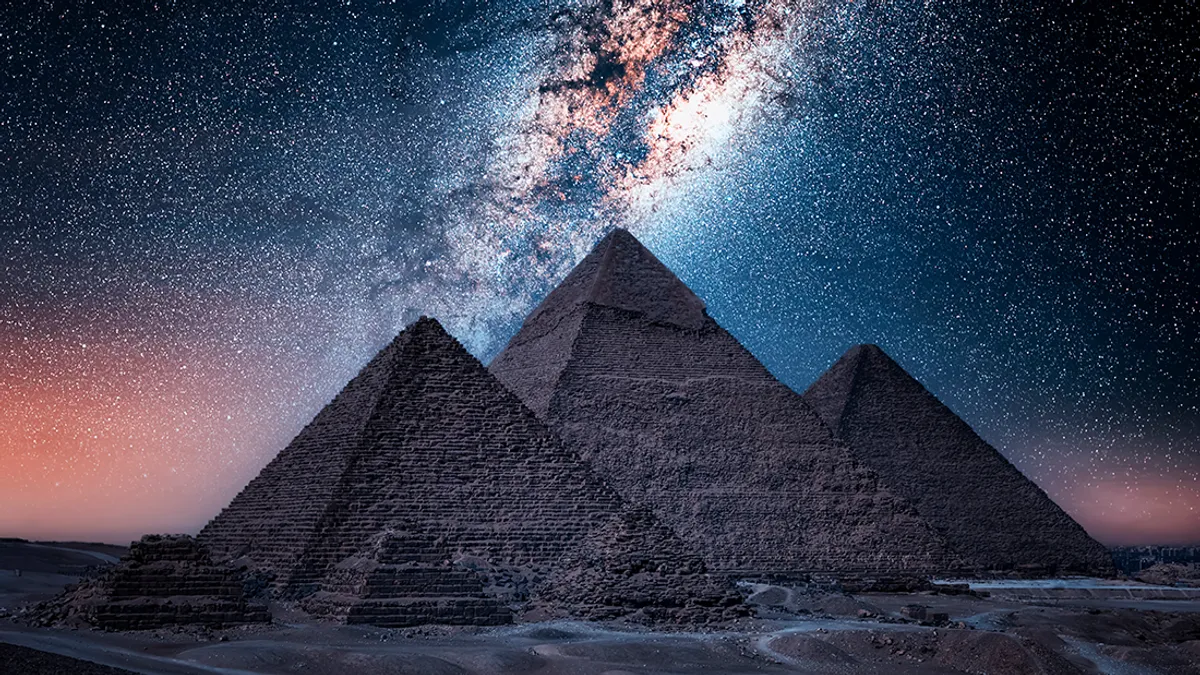
Introduction
One of the most intriguing and oft-discussed coincidences in the realm of ancient structures is the relationship between the latitude of the Great Pyramid of Giza and the speed of light. Some have pointed out that the geographic latitude of the Great Pyramid is 29.9792458° N, which closely resembles the speed of light in a vacuum, which is approximately 299,792,458 meters per second. This remarkable alignment has sparked numerous theories and discussions regarding ancient knowledge and technology.
The Great Pyramid of Giza
The Great Pyramid of Giza, also known as the Pyramid of Khufu or the Pyramid of Cheops, is one of the Seven Wonders of the Ancient World and the largest of the three pyramids on the Giza plateau. It was constructed during the Fourth Dynasty of the Old Kingdom of Egypt, around 2580–2560 BCE.
Construction: Built as a tomb for the Pharaoh Khufu, the Great Pyramid originally stood at 146.6 meters (481 feet) and was the tallest man-made structure in the world for over 3,800 years.
Design and Purpose: The pyramid’s precise dimensions and alignment with the cardinal points have led many to admire the architectural prowess of the ancient Egyptians.
The Speed of Light
The speed of light in a vacuum is a fundamental constant in physics, symbolized as “c.” It is exactly 299,792,458 meters per second (approximately 300,000 kilometers per second). This constant is crucial in the fields of electromagnetism, optics, and modern physics.
Historical Measurement: The speed of light has been measured and refined over centuries, with the modern value established using precise scientific techniques and instruments.
Significance: The speed of light is central to the theory of relativity and plays a key role in our understanding of space and time.
The Coincidence
The latitude of the Great Pyramid is 29.9792458° N, which intriguingly matches the numerical value of the speed of light (299,792,458 meters per second) when the latter is expressed in meters per second. This numerical alignment has fascinated both researchers and enthusiasts.
Numerical Match: The resemblance between the latitude and the speed of light’s value raises questions about whether this is a mere coincidence or if there is a deeper connection.
Ancient Knowledge: Some speculate that the ancient Egyptians may have had advanced knowledge of science and mathematics that allowed them to encode such information in the pyramid’s location.
Theories and Interpretations
Various theories have emerged to explain this curious coincidence:
Coincidence Theory: Many scientists and skeptics argue that the matching numbers are purely coincidental. They point out that the ancient Egyptians did not use the metric system or have knowledge of the speed of light as we understand it today.
Ancient Wisdom Theory: Some proponents of alternative history suggest that the ancient Egyptians possessed advanced scientific knowledge, possibly from an earlier, lost civilization, which enabled them to align the pyramid’s latitude with the speed of light.
Geodetic Purpose: Others propose that the latitude alignment could be part of a geodetic system used by the ancient Egyptians for mapping and navigation purposes.
Scientific Perspective
From a scientific standpoint, the coincidence is intriguing but not necessarily indicative of ancient advanced knowledge. The alignment is likely a remarkable, yet random, alignment of numbers.
Probability: Given the vast number of ancient structures and modern scientific constants, occasional numerical alignments are statistically possible without implying any intentional design.
Historical Context: The construction techniques and knowledge of the ancient Egyptians, while impressive, do not support the idea that they had any understanding of the speed of light.
Conclusion
The numerical coincidence between the latitude of the Great Pyramid of Giza and the speed of light in meters per second is a fascinating quirk that continues to capture the imagination of many. While it is most likely a coincidence, it underscores the human propensity to seek patterns and meaning in the world around us. Whether purely coincidental or indicative of something more, this alignment remains a thought-provoking topic in both scientific and historical discussions.

